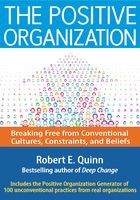
The Positive Mental Map
Again, the simplest definition of a positive organization is that it is a system in which the people flourish and exceed expectations. This means that the organization has a culture in which the people are engaged, collaborating, growing, and performing at an extraordinary level. The kinds of assumptions that give rise to the positive organization can be seen in Table 2.2.
The positive mental map recognizes that people are full of potential and can do things that are not imagined from the conventional mental map.
Yet, to gain the positive mental map, as Alberto did, does not mean rejecting or losing the conventional mental map: it is simply a more complex way of thinking and seeing. It is taking two ideas that appear to be in opposition and understanding how both can operate simultaneously in an organization. It is becoming bilingual in your ability to see potential as well as constraint as indicated in the above two lists. It is to see, understand, and value all the characteristics in Figure 1.1. In Table 2.3 you can see the assumptions of both maps side by side.
TABLE 2.2 Assumptions in the Positive Mental Map

In the next table (2.3), we see the assumptions of both maps side by side. When we embrace all the assumptions in Table 2.3, the organization can be seen as a pyramid of authority and also as a network of social relations. Information can be restricted in some cases and widely shared in others. The authority to make decisions may be invested in one person, but every person has the potential to initiate, influence, or lead. While a person may focus on task completion or on caring for people, a leader of transformational influence is high on task and drives for results while also being high on people. To gain the positive mental map is to become bilingual.
TABLE 2.3 Becoming Bilingual: Holding Both the Conventional and the Positive Mental Maps

Becoming bilingual broadens your worldview, making you like James on his return to the São Paolo airport: he was transformed. Recall that when James first arrived in São Paolo, he was able to navigate his way through the airport—but only with considerable difficulty; he got to his destination eventually—but not easily. Later on, having acquired the ability to speak Portuguese, he had a new capacity for navigating the terrain more effectively, faster, and with greater enjoyment. Acquiring the positive mental map works in a similar way. With the first map, you are able to manage and probably even get to where you need to go; but with both maps, you have options that will make your organization more positive and more effective. With both maps you can pursue all the positive characteristics in Figure 1.1.